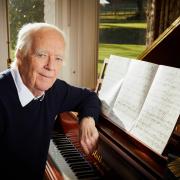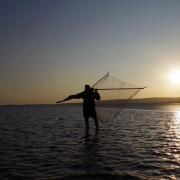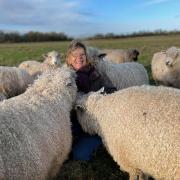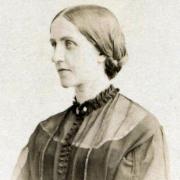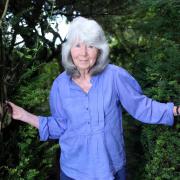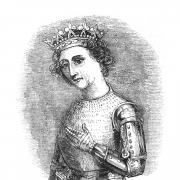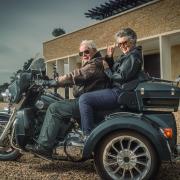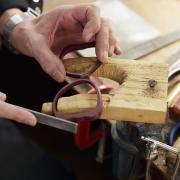Born in Royal Leamington Spa as Edward Alexander Crowley on October 12, 1875, the Aleister Crowley of the future came into the Warwickshire world at 30 Clarendon Square; more elegant side than dark side. Given that he was a product of a wealthy family, there may have been some surprise at his future proclivities when he could have just whiled away his time at some professional calling. His father, Edward Crowley (1829-87), was an engineer by trade but had been able to dispense with the grubby world of work thanks to his share in a more than worthwhile family brewing concern, whilst his mother, Emily Bishop (1848-1917), had an inkling as to her son’s left-field tendencies, labelling him ‘the Beast’.
It seems Emily sensed what was coming; Edward Alexander, the Aleister to be, just rejoiced in the moniker and later referred to himself as the ‘Beast 666’. He seems to have rejected not only his parents’ Nonconformist religion but also pretty much everything they stood for. The word ‘rebel’ comes to mind. I was similarly something of a mystery to my late parents, although I didn’t rebel to quite the same extent as Aleister would. On a sad note, Aleister’s father died in March 1887 when the lad was just 11, but he inherited a third of his father’s considerable wealth so earning a living became a concern for others. His beliefs were destined to become rather more nonconformist than those of his late father.


Among other alma mater, Crowley was educated at Malvern College (1891-92), where he misbehaved, maybe buoyed by the knowledge that he was set up for life no matter how well or badly school went, and, aged 20, Trinity, Cambridge, where it’s alleged he may have added being a spy to his many other attributes. It was whilst at Cambridge that Crowley adopted the moniker ‘Aleister’ and developed a passion for chess.
Crowley left Cambridge in 1898, minus a degree, published his first book of poetry and was admitted into an esoteric order in which he was introduced to the fun of ceremonial magic, or ‘magick’ as Crowley referred to it.
In 1899, when Crowley was in his mid-20s, he acquired a manor on the south-east side of Loch Ness in the Scottish Highlands. Given that he was getting involved in some ‘stuff’ which was somewhat ‘fringe’ to say the least, it would have suited him to have found somewhere secluded where he could dabble in relative privacy. This juxtaposition of ‘the Beast’ and ‘the Monster’ would be home for the occultist right through to 1913. I like the matter-of-fact assessment that this out of the way place had ‘a history of strange happenings long before Aleister Crowley moved in’.


‘Boleskine’ would also attract Led Zeppelin guitarist and co-founder Jimmy Page who bought the manor in 1971. He’d also betrayed a fascination for Crowley by having his motto ‘Do What Thou Wilt’ inscribed on the album cover of Led Zeppelin III the previous year (read on for the backstory of that motto). When the group filmed the movie The Song Remains the Same (1976) some of the filming took place within the grounds of the manor. Album covers and Crowley went together like Black Magic and chocolates, as he’d already appeared on an even more famous one, the iconic Beatles’ cover for Sgt. Pepper’s Lonely Hearts Club Band (1967) where he lines up alongside Hollywood legend Mae West.
Crowley loved his mountaineering and was a member of the 1902 expedition that made the first serious attempt on K2, the world’s second-highest mountain, by tackling the north-east ridge, a foray that was led by his friend Oscar Eckenstein who, despite the name, was English. Eckenstein was detained for three weeks on arriving in India on suspicion of being a spy before being released; it seems the whiff of espionage was never far away from Crowley and his crew. The climb achieved nearly 21,500 feet but had to be abandoned in part because of sickness, with Crowley himself suffering from malaria. As well as climbing peaks Crowley was also partial to a spot of big-game hunting.
In 1904, Crowley married Rose Edith Kelly (1874-1932), whose grandfather – the splendidly named Frederick Festus Kelly – had founded Kelly’s Directories Ltd, that well-known trade directory… the Victorian version of Yellow Pages, if you like. The honeymoon was spent in the ancient ambience of Egypt where Crowley claimed to have been contacted by a ‘supernatural entity’, something that certainly didn’t happen to me when Mrs Steve and I spent our honeymoon night in Kettering (as you do). I understand the ethereal entity was some bod named Aiwass and its pronouncements led to Crowley founding his own religion named ‘Thelema’; the theology of Thelema. Aiwass reputedly dictated The Book of the Law to Crowley which included the handy bit of life guidance: ‘Do What Thou Wilt’. From all I know of Crowley, it appears he did his level best to follow the creed.
Crowley was expedition leader for the 1905 Kanchenjunga expedition, a Himalayan mountaineering jolly that attempted to ascend to Kanchenjunga’s summit, the world’s third-highest, something that wouldn’t actually be achieved for another half century. The south-west face was the ambitious target, but the expedition was soon in bother with dissension in the ranks, partly caused by Crowley’s arrogant behaviour which actually led to an attempt to depose him from his leadership position. The mission failed in its objective; however, Crowley claimed they achieved a height of 25,000 feet in his autobiography which, if true, would have been a record until a later expedition of 1922.
Crowley spent time in both India and China. Mr and Mrs Crowley would divorce in 1909, having had two daughters, including the wackily dubbed Nuit Ma Ahathoor Hecate Sappho Jezebel Lilith, who tragically died very young. Given that Aleister had heard voices on his honeymoon then scarpered the following year to climb a mountain, well, I’m only surprised the marriage lasted as long as it did… although to be fair Mrs Crowley also ‘dabbled’. He’d have five children in total, but I doubt any of the others were lumbered with anything quite as bizarre as poor little Nuit.

Crowley spent WWI in America where he took up painting and apparently spoke up for the German war effort against his home country. He was nothing if not controversial, although he later claimed that his German advocacy was all part of his secret service work. He certainly achieved much notoriety during his lifetime, so if one estimate of greatness is being talked about a lot then he deserves his inclusion in this column.
In 1920, our disciple of Aiwass established a religious commune in Sicily – the ‘Abbey of Thelema’ – which he occupied as a temple and spiritual centre with his followers until he was booted out of Italy by Mussolini (hardly a paragon of virtue himself). Seemingly for his hedonistic lifestyle, the British tabloid press dubbing him the ‘wickedest man in the world’.


The commune was co-founded by the Swiss-born Leah Hirsig (1883-1975) who became the most famous of Crowley’s so-called ‘Scarlet Women’. Sicily may have got the boot, but that didn’t prevent Crowley from promoting the virtues of Thelema for the rest of his days. Crowley married a second time to Maria Sanchez in 1929.
A poverty-stricken and by then obscure Aleister Crowley died on December 1, 1947 in Hastings, aged 72. His notoriety didn’t end with his death. Having been condemned in his own lifetime for his decadent goings on, he became a bit of a cult figure during the 1960s as counterculture became all the rage. I think he rather would have fancied the ’60s had he lived long enough. He continues to be regarded as something of a Thelema prophet and also a cult figure among non-conforming rebels and anyone having a dabble in occultism. It’s been said that if Tolkien, a man of Oxford, was the epitome of fantasy, then it was Crowley, a non-graduate of Cambridge, who was the definition of the occult.

CHRONOLOGY
1875 – Edward Alexander Crowley born in Royal Leamington Spa (October 12).
1887 – Death of Alexander’s father bestows an inheritance which Crowley squanders.
1891 – Attends Malvern College (until 1892) where he develops his bad boy persona.
1898 – Leaves Trinity, Cambridge, but minus a degree.
1899 – Acquires a Scottish retreat close to Loch Ness which later attracted Jimmy Page.
1902 – Member of the 1902 mountaineering party that attempted to conquer K2.
1904 – Married Rose Kelly, honeymooning in Egypt, where Crowley is ‘contacted’.
1905 – Expedition leader for the Kanchenjunga expedition.
1920 – Crowley establishes his ill-fated commune in Sicily (until 1923).
1947 – Death of Aleister Crowley in Hastings (December 1) aged 72.
References
Britannica (britannica.com)
Oxford Dictionary of National Biography (oxforddnb.com)
Atlas Obscura (atlasobscura.com)
National Portrait Gallery (npg.org.uk)
IMDb (imdb.com)
Encyclopedia (encyclopedia.com)




